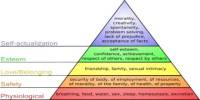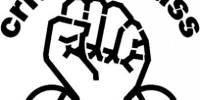Abstract: This Article is Written to see the Real Secinary of the girls child of Bangladesh. This Article also provide the Recommendation for solving this problem in Bangladesh. In Bangladesh a large number of children are deprived of their basic human rights due to unacceptable health, nutrition and education as well as social conditions. In addition, children are exposed to severe forms of physical and mental violence at home, in the work place, in institutions and other public places. The nature and extent of violence against children irrespective of age, sex and class has been increasing day by day. On the whole, our children are not safe despite efforts made by government and non-government organizations in ensuring the rights of the children. Broadly, violence against children can be defined to include physical, emotional or psychological violence or threat of violence against children perpetuated by individuals, as well as by institutions or society at large. Depriving children of basic necessities of life, health care and education, so much widespread in a developing country like Bangladesh, are encompassed by this holistic definition.
Introduction:
With gender equality being the subject of the concern among the policy makers of developing countries, the integration of women into the development process and therefore their participation in economic activities along with men, have been gaining importance in many national development plans. Eliminating discrimination and violence against girl children has been on the international, regional and national agendas for over a decade. Notwithstanding, girls continue to be discriminated against because of their sex and are exposed to many forms of violence. This Expert Group meets to share experiences on both successes and failures in addressing all forms of discrimination and violence against the girl child, with a view to providing policy recommendations for governments, the United Nations and other stakeholders.
Methodology :
This assignment is written entirely on the basis of secondary data that include review of books, journals, periodicals, news paper and research reports, proceedings of seminar and publications of various organizations concerned with patriarchy and women subordination.
Objectives and Procedure:
The article is an assessment on girl child in Bangladesh perspectives. So for this purpose this article is organized into various sections to identifythe challenges and risks of girl child, the reasons for these challenges and recommendations to reduce the risks which they face.
This study is based on information collected from secondary sources. Journals especially law journals, books dealing with girl child and the data to be found in the tables include in this article have been taken from different associations which are related with this arena.
Who are the girl children?
In order to design any policy, the first step is to clarify our framework. I propose to define girl children as a socially constructed category around female persons between 0 and 18 years.
Childhood is built on the cross road with other identities we have as individuals. Ethnicity, class, nationality, family environment, sexual orientation, occupation, and other features, such as if they live in a violent environment, if they are deprived of freedom, if they are disabled persons, if they are from western or eastern hemisphere; these are identities whose interconnection will place these girls in a situation with more or less access to their human rights. Hence, public policy should take these differences into consideration since these policies will affect unequally girls who are in different situations.
What are the human rights of the girl-child?
Human Rights are universal, and civil, political, economic, social and cultural rights belong to all human beings, including children and young people. Children and youth also enjoy certain human rights specifically linked to their status as minors and to their need for special care and protection. Girl-children are particularly vulnerable to certain human rights violations, and therefore require additional protections.
The human rights of children and the girl-child are explicitly set out in the Convention on the Rights of the Child, the most widely ratified human rights treaty in history. They are also contained in other human rights documents including the Universal Declaration, the Covenants, CEDAW, and other widely adhered to international human rights treaties and Declarations.
Problems that they Face:
1) Bangladeshi girls are born underweight and malnourished. They are frequently nursed less and fed less and lower quality food than boys. Girls are taught to ‘eat last and eat least’-giving the best food to boys and men. Thus girls are more likely to suffer malnutrition then boys.
2) The adolescent girls run high risks of sexual violence such as rape, eve teasing, acid throwing dowry demands etc. They are deprived from getting property rights from their family.
3) Over the last decade,2000,000 Bangladeshi girls, some as young as seven, were forced into prostitution throughout the continent. Within the country, the prostitution of girls is also rampant.
4) Girls often marry much older men soon after they reach puberty. Early marriage to older men reinforces the patriarchal power gap and can pose a serious health risk for girls.
5) Dowry is widespread throughout Bangladesh and particularly widespread in rural areas. The dowry practice puts enormous economic pressure on the parents of girls.
6) Most of child domestic servants in Bangladesh are girls. These girls are exploited by low wage, compulsory over time, deprivation of food and other necessities of life along with sexual harassment in the workplace.
7) Bangladeshi girls suffer from extreme violence ranging from incest, rape, neglect and homicide, as well as emotional abuse. Teasing is pervasive and can be detrimental to one’s mental health, sometimes leading to suicide. Acid attacks are among the most vicious assaults
8) Gender parity has not yet been reached at the secondary level, although almost equal numbers of boys and girls are enrolled in primary schools.
Using children for political activities and for trafficking arms and drugs :
The members of political parties and other vested interest groups have been using a large number of children (mostly street children) for different violent activities that include throwing bombs / bricks at police and cars and on the processions of opposition parties. Using children as carriers of arms/ ammunitions, narcotics are also common practice in recent times. In 2001, Bangladesh Shishu Adhikar Forum (BSAF) and Aparajeo Bangladesh jointly carried out a study on ‘Using Children in Carrying Arms and other Illegal Activities’. A total of 16 children were interviewed who had been engaged in such activities. The findings of the study showed that people like local political leaders, student leaders, leaders of the transport workers unions, members of the local clubs and musclemen usually use children for illegal activities. The activities include attacks on political opponents, occupying slums/illegal lands, trafficking drugs, collecting tolls from contractors, snatching, pick-pocketing etc. The amount of payment varies from case to case (ranging from 50 taka – 1000 taka) depending on the importance of the incidents. Besides, these children feel proud becoming a part of terrorist groups, which gives them additional ‘honor’ in the locality they live in and a sense of security. Children are more aware than the adults about the risk of getting involved in such activities, however, they usually do not care about the risks. According to the children, some of the main risks they face include the chance of being beaten by the police, ending up in jail, severe injury, receiving abuse and/or physical torture in case of failing the mission etc. Many children have already experienced some of these risks. Usually children are not aware about the long-term negative impact on their lives due to their involvement in such illegal activities.
Acts of Violence against Children in 2001 :
Children in Bangladesh are subjected to violence in the forms of sexual and physical abuse in many aspects of their lives. In 2001, there were 7 young domestic workers injured by their employees, 3 were raped and 4 killed . Eight year old Zahirul of Khagrachari was beaten by his employer for eating a piece of cucumber without permission. A fifteen year old girl accidentally let her employers child fall off her lap. She was punished with hot oil being poured over her . Then there are types of gross physical and sexual abuse which are reserved almost exclusively for girls. These include physical torture, rape and dowry-related violence and sometimes heinous attacks with acid and other corrosive substances. 14 year old Poppy in Narshingdhi was a victim when her husband threw acid on her over dowry demands. Not only is she scarred for life, she is a victim of child marriage, illegal in Bangladesh . Sexual abuse of children and adolescent girls is a growing problem, but this remains largely hidden due to the stigma attached to the victims of such offences. Newspaper reports of such incidents show that girl children are lured away by the promise of chocolates, biscuits, to play games, watch television or they are ambushed and raped while going to or coming from school or the lavatory. In 2001, a total of 356 cases of rape were documented from the newspapers where the victims were under 16 years of age.4
Acts of Violence against Children in 2001
Months | Killed | Raped | victims of Acid | Suicide | Arrested | Abducted | Trafficked |
| January | 18 | 29 | 1 | 1 | 5 | 10 | 0 |
| February | 7 | 36 | 1 | 0 | 3 | 2 | 0 |
| March | 13 | 37 | 6 | 1 | 3 | 10 | 1 |
| April | 16 | 39 | 8 | 0 | 4 | 3 | 0 |
| May | 17 | 34 | 2 | 0 | 1 | 7 | 2 |
| June | 22 | 52 | 13 | 1 | 10 | 20 | 4 |
| July | 32 | 25 | 9 | 6 | 3 | 14 | 0 |
| August | 17 | 16 | 9 | 0 | 6 | 14 | 0 |
| September | 11 | 9 | 3 | 3 | 2 | 3 | 5 |
| October | 14 | 31 | 5 | 0 | 1 | 6 | 0 |
| November | 22 | 27 | 4 | 1 | 7 | 10 | 0 |
| December | 21 | 21 | 5 | 1 | 4 | 12 | 1 |
| Total | 210 | 356 | 66 | 14 | 49 | 111 | 13 |
|
|
|
|
|
|
|
|
|
Causes for these Discriminations and Violence against girl-child:
The main reason for violence against children could be the conflict of interest and power between adults and children. Adults in Bangladesh usually tend to impose their choices on children without taking into consideration children’s expectations or opinions. If children do not want to follow adult’s decision they are likely to suffer abusive behavior, physical punishment and other forms of cruelty from adults. Most adults do not recognise the ability of children to express their opinions and have a role in household decision making. Lack of awareness about child rights among most of the adults could also be considered as one of the contributing factors towards the incidents of violence against children. Some specific reasons are discussed below-
1. Although children are very welcome in our personal and family life, most adults do not have adequate knowledge about the rights of the children. As a result, in most cases, adults’ behavior towards children is not always supportive of the welfare and overall development of the children. Children are also unable to protest against the violation of their rights as they are not fully empowered to do the same.
2. Adults do not usually see children as responsible opinionated human beings. Rather they consider children as fully dependent on others. It is easy for adults to forget the potential that children have and their special needs as children.
3. The right to express opinions is one of the fundamental rights of children recogniosed by national and international provisions. However, in reality, children usually do not get the opportunity to share their own feelings on matters that have a direct or indirect effect on their lives.
4. There is no strong and effective children’s organization, especially in the rural areas, through which children could mobilize themselves in order to protest against violent activities. There is also a lack of coordination among the existing children’s organizations.
5. Due to the poor economic condition at family level, many children suffer abusive behavior and physical torture by their parents. In some cases, failing to provide basic necessities parents force their children into income earning activities at a very early age, which in turn exposed children to various violent situations.
6. The majority of teachers believe that physical punishment is the best means of discipline. They also believe that students follow school rules better when threatened with a stick. They were not aware about the negative impact of physical punishment. Most of the teacher does not know the alternative techniques. They think physical punishment is the only means to disciplined students. Most of the teachers think that student expect to be physically punished if they are disobedient, and physical punishment is a part of common culture, (a sort of understanding) between the teacher and the student. They think that when physical punishment becomes “institutionalised’’ in a society, children tend to accept it as part of growing up and physical punishment is beneficial for them.
Interventions by the state:
The most important step made by the Bangladesh government towards national law and policy with regards to the United Nations Convention on the Rights of the Child, has been the formulation of a National Policy on Children in December 1994. The principle objectives of the policy are to formally harmonize all child development activities in the country with the provisions of UNCRC. It declares six general commitments. • Safe birth and survival;
• Proper educational and psychological development;
• Ensuring family environment for development ;
• Providing assistance to children in difficult circumstances;
• Ensuring the best interests of the child; and
• Protecting children’s legal rights and thus protect them from discrimination.
The International community:
Under Article 19 of the UNCRC, children have a right to protection from violence, injury, abuse, neglect, maltreatment of exploitation while in the care of parents or anyone acting in their place. Both physical and mental forms of abuse and maltreatment are included, and sexual abuse is specifically mentioned. The duty of the ratifying State to protect children from sexual abuse in all its forms is also stated in Article 34, (for example by using them as prostitutes). This includes action to prevent children being persuaded or forced to take part in illegal sexual activity. A failure to uphold these rights is likely to involve the violation of other rights, in particular, the right to education and to rest and leisure (Article 31). Article 37 guarantees protection to children against torture and other cruel, inhuman or degrading treatment. Where a child has suffered physical or psychological damage as a result of abuse, maltreatment or torture, ratifying State must take steps to aid the child’s recovery and social reintegration (Article 39).
Bangladesh became a signatory of the UNCRC and ratified it. International agencies help shift cultural attitudes. UNICEF’s cartoon series, Meena, addresses the unfair treatment of girls in the family, and their reduced access to health and education services. UNICEF also employs nutrition in over 1000 community centers in Bangladesh to promote improved caring practices, with special attention given to girls. The World Bank’s Female Secondary School Assistance Project, set up in the early 1990’s, provides incentives to keep girls in school and resulted in a sharp rise in the number of girl enrolled in grades six through ten. The girls brought into the program receive a small cash stipend and a tuition assistance payment has also been provided to schools that participate in the program.
Steps by the Government to ensure the Safety of Children
The most important step made by the Bangladesh government towards national law and policy with regards to the United Nations Convention on the Rights of the Child, has been the formulation of a National Policy on Children in December 1994. The principle objectives of the policy are to formally harmonize all child development activities in the country with the provisions of UNCRC. It declares six general commitments.
• Safe birth and survival;
• Proper educational and psychological development;
• Ensuring family environment for development ;
• Providing assistance to children in difficult circumstances;
• Ensuring the best interests of the child; and
• Protecting children’s legal rights and thus protect them from discrimination.
It was followed by National Plan of Action for Children 1997-2002 which was adopted in November 1998, designed especially to continue the implementation of the UNCRC in Bangladesh.
Some initiatives taken by the NGOs:
BRAC started a project called Adolescent Peer Organised Network (APON) in 1993 under its poverty eradication and women empowerment programme. The main objective of the APON project is to ensure economic empowerment of the adolescent girls from disadvantaged families.
Shoishob Bangladeshis a pioneer organisation in Bangladesh in addressing the issue of violence against domestic helpers of which ninety percent are girls. Four types of violence monitored care by Shoishob, namely, physical, sexual, mental and social. Shoishob’s activities are solely based in DhakaCity since its inception in 1991.
The Center for Mass Education in Science (CMES)initiated a project called The Adolescent Girls’ Programme (AGP) in 1991. The objective of the programme is to empower girls through continued education, skill training, awareness about health, reproductive health, social and legal rights, family life, cash income earning, access to credit and leadership development. 16,000 adolescents from the most disadvantaged families (girls –14000, boys – 2000) aged between 11 and 19 years have been enrolled till now, in 20 projects divided into 4 zones throughout the country.
International Conventions
Under Article 19 of the UNCRC, children have a right to protection from violence, injury, abuse, neglect, maltreatment of exploitation while in the care of parents or anyone acting in their place. Both physical and mental forms of abuse and maltreatment are included, and sexual abuse is specifically mentioned. The duty of the ratifying State to protect children from sexual abuse in all its forms is also stated in Article 34, (for example by using them as prostitutes). This includes action to prevent children being persuaded or forced to take part in illegal sexual activity. A failure to uphold these rights is likely to involve the violation of other rights, in particular, the right to education and to rest and leisure (Article 31). Article 37 guarantees protection to children against torture and other cruel, inhuman or degrading treatment. Where a child has suffered physical or psychological damage as a result of abuse, maltreatment or torture, ratifying State must take steps to aid the child’s recovery and social reintegration (Article 39). Bangladesh became a signatory of the UNCRC.
Recommendations:
Even if every country in the developing world increases its education budget, there is no assurance that girls will be educated. If every country increases its health budget, there is no assurance that little girls will be healthier. Unless a government takes specific actions on behalf of women and girls, increased funding will only perpetuate and widen the gender gap. And the world’s basic problems will persist. And so I recommend the following actions to governments:
• I would mandate farm extension agents to actually show up and work with the women farmers to increase their incomes and reduce their drudgery, since it is the daughters who inevitably share and inherit their mother’s workload.
• I would expand the mandate of the health workers and midwives to teach mothers to breastfeed their girl babies as long as their boy babies. And ensure that their daughters are as well fed as their sons.
• I recommend that governments provide scholarships for girls through secondary school, and provide incentives to parents to keep their girls in schools.
• I would expand the mandate of school teachers to create equal opportunities for girls to learn and to become leaders. And there would be zero tolerance for violence against girls in school.
• It is essential for governments to provide farm extension agents, health workers and teachers with adequate supplies and sufficient training.
• It is also essential for governments to increase – and increase significantly the number of women in these professions.
• The developed world can express its partnership by increasing the amount of aid, and making all development aid conditional on countries improving the lives of women and girls.
Conclusion:
Children are probably the most neglected members of society and hardly have any voice, even within the home. As a result, they are consistently becoming easy victims of all sorts of violence. Though there is the Children Act 1974 purported to dealing with juvenile justice, even that, too is inadequate. Furthermore, the legal system, especially the criminal justice system – and more specifically the law enforcement agency – are indifferent to such laws and more often than not treat children just as they would treat adult criminals. Violence against children must stop and the judiciary, law enforcing agents and the parents and guardians of children themselves, must be sensitized to the provisions of the Convention on the Rights of the Child and the laws protecting children in Bangladesh. Furthermore, children need to be protected from vested interest groups and acts of impunity towards children by those purporting to protect society must be dealt with seriously and in accordance with the law.
Bibliography:
1.www.unicef.org/infobycountry
2.www.unicef.org/policy analysis
3.http://www.pdhre.org/rights/women-girl-child/
4. unfpa.org/intercenter/beiji-ng/girl.htm
5. eureka/k/sapint/girl-child/
6. cwgl.rutgers.edu/16 days/kit05/asiapacific.htm
7. https://www.cia.gov/library/publications/the-world-factbook/geos/bg/.
13 n a speech by
















